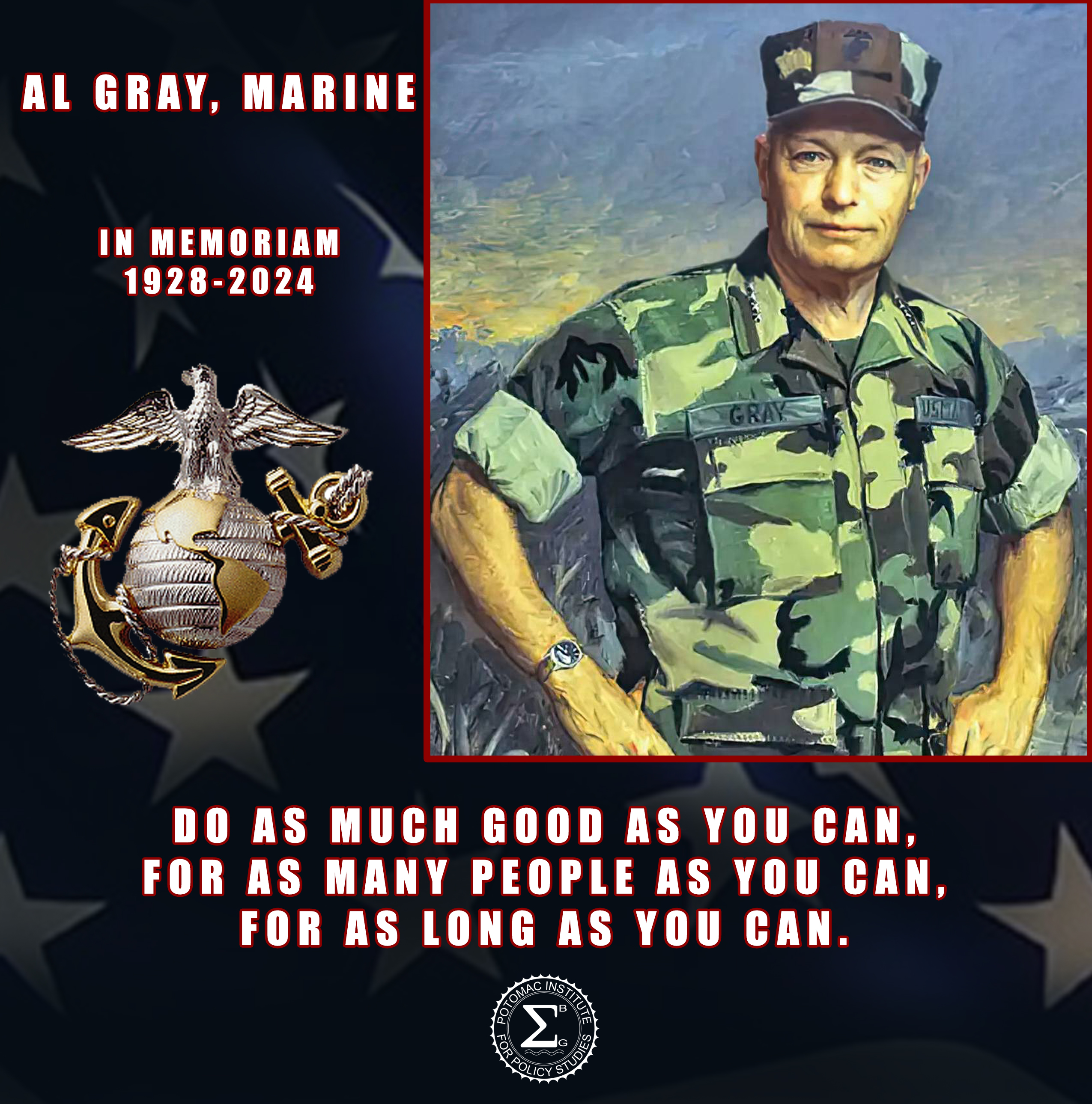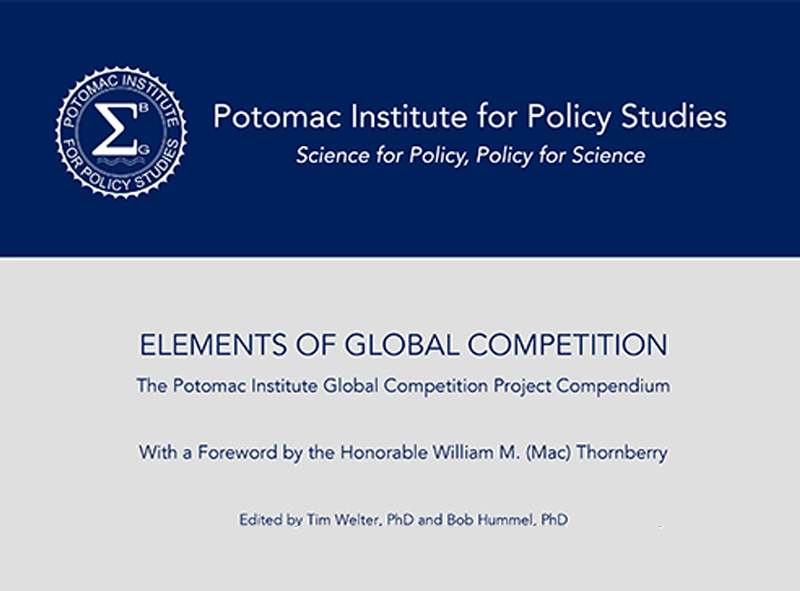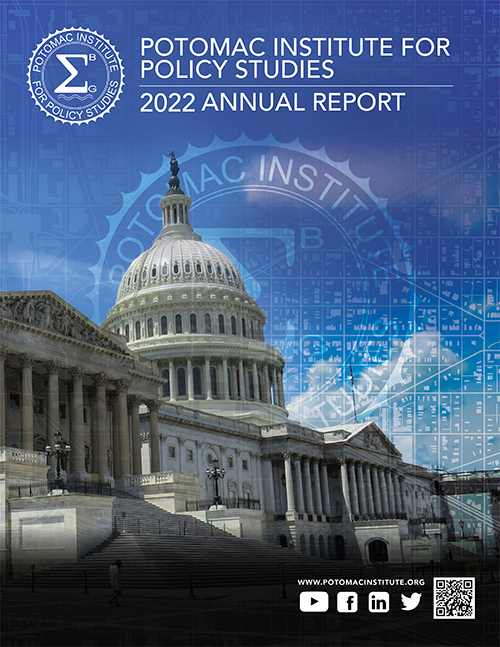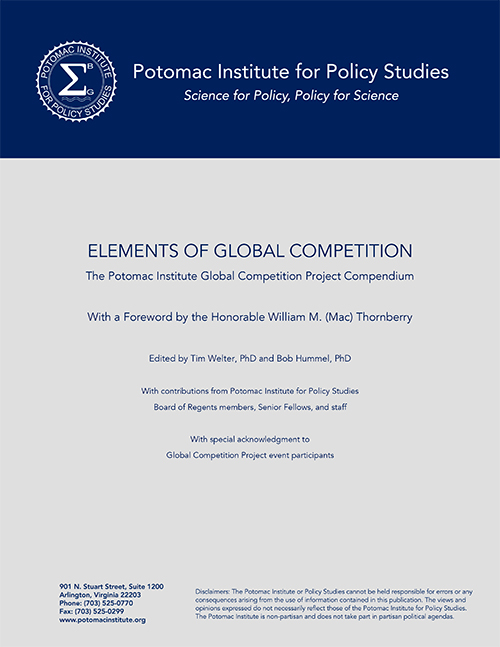Featured


General Alfred M. Gray Jr., the 29th Commandant of the Marine Corps, died March 20 at his home in Alexandria, Virginia. He was 95. General Gray was preceded in death by his beloved wife of 39 years, Jan, who passed away January 30, 2020.
Born June 22, 1928, in Point Pleasant Beach, N.J., Gray enlisted in the Marine Corps in 1950 after dropping out of college to fight in Korea, serving as a radio operator with the Amphibious Reconnaissance Platoon, Fleet Marine Force, Pacific.
Over the next 41 years, Gray established a legacy of heroism in combat, deploying eight times to lead Marines in dangerous missions – several of them clandestine. Gray earned the distinction of leading the first independent ground operations by a Marine unit in Vietnam while commanding a composite unit of signals intelligence Marines supported by attached infantry. During his several deployments to Vietnam, Gray pioneered modern signals intelligence collection methods and developed operational employment concepts in which intelligence drove follow-on operations. His lifelong advocacy for such techniques earned him admittance to the National Security Agency’s Hall of Honor in 2008 for lifetime achievements in the area of signals intelligence. His early work and establishment of two units, formed the nucleus of what is known today as the Marine Cryptologic Support Battalion.
Commanding at every operational level from 40-person platoon to 40,000-strong Marine Amphibious Force, General Gray reached the pinnacle of Marine Corps leadership when Navy Secretary James Webb selected him to serve as the 29th Commandant of the Marine Corps.
While Commandant of the Marine Corps, General Gray established an unrivaled reputation as a champion of academics and professional education. He federated five of the Corps’ formal schools for officers and senior enlisted leaders under the umbrella command of a new Marine Corps University. Hundreds of Marine leaders earn accredited degrees through the university each year as they complete courses of study for promotion and advancement. For Marines of all ranks, Gray implemented the requirement to read at least two books each year from a list he hand-selected. The Commandant’s Reading List remains a fixture of Marine Corps professional development.
Gray also led the Marine Corps through the adoption of the doctrinal warfighting concept that serves as the distinguishing institutional and operational philosophy to this day. The Corps’ embrace of maneuver warfare doctrine earned it numerous battlefield successes from the 1980s through the modern day. Maneuver warfare continues to be studied not just by U.S. Marines, but by foreign militaries and even civilian business schools around the world. Maneuver warfare emphasizes adaptability, decisiveness, and initiative based on common operational understanding.
Throughout his career, Gray’s experience as a junior Marine and a noncommissioned officer anchored his leadership philosophy. In an address to a graduating U.S. Naval Academy class, he advised the newly commissioning officers, "If you come and join my Marines, I want you to know that your 'number one' job is to take care of the men and women you are privileged to lead."
Gray stated in interviews that his best day in the Marine Corps was the day he promoted to corporal and joined the ranks of noncommissioned officers.
"I think as excited as I ever was as a young Marine ... my proudest day probably was when I got to put corporal on my return address on the envelope [home]. That was a very, very good day."
Gray left his mark in other ways as well. When visitors to the Pentagon observe the portraits of the Corps’ Commandants hanging in the Marine Corps hallway, the tidy row of officers bedecked in Marine Corps Dress Blues and gleaming medals is abruptly disrupted by the face of General Gray smiling back at them as he stands proudly in his Camouflage Utility Uniform. As was his reputation, Gray sought to deliver an enduring message. He adamantly instructed all Marines that “every Marine is, first and foremost, a rifleman. All other conditions are secondary.”
This warrior mindset manifested itself in the areas of training and combat readiness as well. Gray directed changes to Marines’ readiness to fight “in any clime or place,” as the service’s hymn reads. Marine formations trained to conduct large-scale maneuvers in desert and cold-weather environments, as unit leaders implemented the tenets of maneuver warfare. This transformation in the aftermath of the Vietnam War-era included the development of a maritime special operations capability, emphasis on the education of leaders, establishment of the Marine Corps University, and development of a long-range desert operations capability.
From their first date in September of 1969, General Gray and his wife Jan were separable only by fidelity to Corps and duty. After a brief engagement, then-Major General Gray and Jan married on July 27, 1980, in Burlington, Vermont. Throughout their marriage of nearly 40 years, Mrs. Gray gave her time and efforts unselfishly to the Marine Corps. She was best known for her dedication to the Navy-Marine Corps Relief Society, the Marine Corps Scholarship Program, the Navy Wifeline Program, the Marine Corps Toys for Tots Program, and the families of casualties from the Beirut Bombing. In 1985, she was lauded with the Marine Corps League Distinguished Service Award. In 1991, the Department of the Navy bestowed on her its Distinguished Public Service Award, recognizing her years of dedication to the men, women and families of the Department of the Navy.
After his military retirement, General Gray served as board chairman and CEO for several public and private companies and was a consultant for several organizations in national and international industry and government. He served on the Defense Science Board; Defense Special Operations Advisory Group; National Security Agency Science Advisory Board; National Reconnaissance Office Gold Team; Defense Operations Support Office Advisory Team; and as director of the Advanced Concept Demonstration Technology for Combat in the Littorals. General Gray was also chairman emeritus of the Injured Marine Semper Fi Fund and America Fund, which help take care of wounded veterans and their families. In addition, he served as chancellor of the Marine Military Academy and chairman of the U.S. Marine Youth Foundation, Chairman of the Board of Directors of the Potomac Institute for Policy Studies, and the Chairman of the Board of the Norwich University Advanced Research Institute.
A public viewing for General Gray will be held from 1400-1600 and 1800-2000, April 7, 2024 at Demaine Funeral Home, 520 S. Washington St, Alexandria, Virginia 22314, 703-549-0074. There will be an open-to-the-public Full Honors Funeral Ceremony in the National Capital Region at a location and time to be determined. Burial services at Arlington National Cemetery will follow the funeral ceremony. In lieu of flowers, General and Mrs. Gray wish for donations to any of the following charitable organizations:
- Injured Marine Semper Fi Fund
- Marine Corps Law Enforcement Foundation
- Marine Youth Fitness Foundation
- Marine Corps University Foundation
- Marine Corps Heritage Foundation
- Marine Corps Scholarship Foundation
- Hope for the Warriors
- Toys For Tots
- Carolina Museum of the Marine
- Marine Corps Association and Foundation
- Navy and Marine Corps Relief Society
-30-
See official Obituary here

ELEMENTS OF GLOBAL COMPETITION The Potomac Institute Global Competition Project Compendium
With a Foreword by the Honorable William M. (Mac) Thornberry
Edited by Tim Welter, PhD and Bob Hummel, PhD
With contributions from Potomac Institute for Policy Studies Board of Regents members, Senior Fellows, and staff
With special acknowledgment to Global Competition Project event participants

The Potomac Institute (the “Institute”) has never had an identity crisis, at least not in terms of our basic mission. That mission has always centered around four factors: national security, science and technology (S&T), US industry, and government policy. The Institute’s goal has always been to find ways to create or improve government policy with business best practices to address the nation’s hardest challenges.
The work we do for our customers is a direct reflection of our priority to research and recommend science and technology policies. Our Focus Areas and the areas where they overlap allow us to integrate themes and incorporate data across our portfolios. We find the most success when we elevate the discussion and provide big ideas to address the complexity of national security.
In 2022, we added two economists, an education program director, several strategic communications and policy experts, and eleven new Board of Regents and Senior Fellows (see next page for full list). We continue to diversify our staff and affiliate expertise to support our growing client base and add new dimensions to research and recommendations.
We are lifetime learners, each at the Institute to grow our minds and develop big ideas to change the world. Our researchers and analysts are continuously identifying new ways to understand the future tech- nical landscape and political environment. We value knowledge and teaching, as seen in our academic studies, our education programs, and our publications.
In this report, we highlight several key accomplishments and work from last year. This work led us to iden- tify important areas of impact that our staff is uniquely qualified to study and produce high quality publi- cations to impact the ongoing S&T policy dialogue. We couldn’t do it without our incredibly supportive client base, talented staff, Board of Regents, and Senior Fellows.
Read full report here

 Brian Shirley, Member of the Board of Regents, Potomac Institute for Policy Studies
Brian Shirley, Member of the Board of Regents, Potomac Institute for Policy Studies
INTRODUCTION
Recent events starkly highlighted the importance of semi- conductors to the US economy and the fragility of the US semiconductor supply chain. These shortages were esti- mated to have cost over a full percentage point of 2021 US GDP,1 prompting Congress to pass the 2022 CHIPS and Science Act to level the playing field for onshore semicon- ductor manufacturing after decades of decline.
However, unrelated tax code changes are threatening to unravel any benefit from the CHIPS Act. New 2022 regula- tions that disallow the same-year expensing of investments in research and development (R&D) have perversely made the already-uncompetitive US tax code even more puni- tive to innovation. These disincentives to R&D risk harming US competitiveness across all high-tech fields, including those sectors where the US currently leads.
Continue With full Paper Here.

 Critical minerals are essential for the composition of modern technologies, from consumer devices to weapon systems. Access to critical minerals is important for defense applications as well as economic security. With projections for increased demand and absence of viable substitutes, competition to secure these minerals will grow. However, critical minerals are not evenly distributed across the globe, nor does each coun- try have the infrastructure in place to process unrefined, raw material. Current supplies to the US rely on imports, some from potentially unfriendly countries. For certain critical minerals, there are limited numbers of sources of raw materials and refin- ing plants. Both defense and consumer needs might be jeop- ardized should adversaries embargo supplies. Often, critical minerals are embedded in finished products that are procured from international sources, masking the reliance on limited foreign sources. The US needs a diversity of acquisition routes of critical minerals to mitigate vulnerabilities from unstable market pressures or fickle foreign sources.
Critical minerals are essential for the composition of modern technologies, from consumer devices to weapon systems. Access to critical minerals is important for defense applications as well as economic security. With projections for increased demand and absence of viable substitutes, competition to secure these minerals will grow. However, critical minerals are not evenly distributed across the globe, nor does each coun- try have the infrastructure in place to process unrefined, raw material. Current supplies to the US rely on imports, some from potentially unfriendly countries. For certain critical minerals, there are limited numbers of sources of raw materials and refin- ing plants. Both defense and consumer needs might be jeop- ardized should adversaries embargo supplies. Often, critical minerals are embedded in finished products that are procured from international sources, masking the reliance on limited foreign sources. The US needs a diversity of acquisition routes of critical minerals to mitigate vulnerabilities from unstable market pressures or fickle foreign sources.

